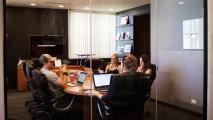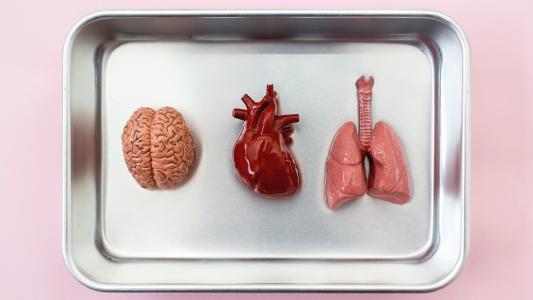The U.S. may be easing out of lockdowns, but the coronavirus pandemic still isn’t over — meaning employers must now find a way to both reopen their businesses and keep employees safe during COVID-19.
Here’s what experts say they should do to minimize workers’ risk of infection when they return to work after lockdown.
How to Keep Employees Safe During COVID-19
To keep employees safe during COVID-19, employers must focus on both keeping the coronavirus out of the workplace and limiting the spread of any infections that do make it through the doors.
In an opinion piece for the Wall Street Journal, Scott Gottlieb and Lauren Silvis (two veterans of the FDA) suggest that employers conduct fever checks and ask employees to complete health questionnaires as a first line of screening.
A business could offer tests to rotating groups of at risk employees.
Scott Gottlieb, Lauren Silvis
In its official guidelines for businesses, the CDC recommends conducting these COVID-19 screenings at multiple workplace entrances, if possible, to allow for social distancing. It also encourages employers to put a premium on worker privacy during the screening process.
But because someone can be infected with the coronavirus and not have symptoms, even the most robust symptom screening might not be enough to prevent the coronavirus from entering the workplace.
That means businesses will also need to focus on minimizing any potential spread of the coronavirus in order to keep employees safe during COVID-19.
The Return to Work After Lockdown
According to Gottlieb and Silvis, on-site testing can help employers catch infections early, before they spread throughout the workforce. But since daily testing of every employee might not be feasible (tests may be too expensive or in short supply), the pair recommends that employers get strategic with their testing.
“A business could, say, offer tests to rotating groups of at risk employees,” they wrote, “based on who people come into regular contact with at work. Think of cohorts divided on different floors of an office building, or different parts of a shop floor.”
Group or pooled coronavirus testing is another option. This would allow employers to screen batches of employees for COVID-19 with just one test. If a group tests positive, the business can then test all of its members individually to narrow it down. This can save on time, money, and logistics, while still keeping an eye out for new infections.
The most straightforward way for businesses to keep employees safe during COVID-19 is to encourage them to do the same things they were doing during the coronavirus lockdown: wear face masks and wash their hands regularly.
Staying at least six feet away from their co-workers when they return to work after lockdown is also important, so if a meeting can take place via video or phone, that’s preferable to meeting up in person.
Businesses should also strive to keep the worksite coronavirus-free by frequently disinfecting surfaces and equipment. Employers might also want to consider increasing their indoor air ventilation and buying hands-free alternatives to things like soap dispensers and trash cans.
Ultimately, though, the most effective way for businesses to keep employees safe during COVID-19 would be to let them stay at home, so remote work should be encouraged and supported whenever possible.
We’d love to hear from you! If you have a comment about this article or if you have a tip for a future Freethink story, please email us at tips@freethink.com.






